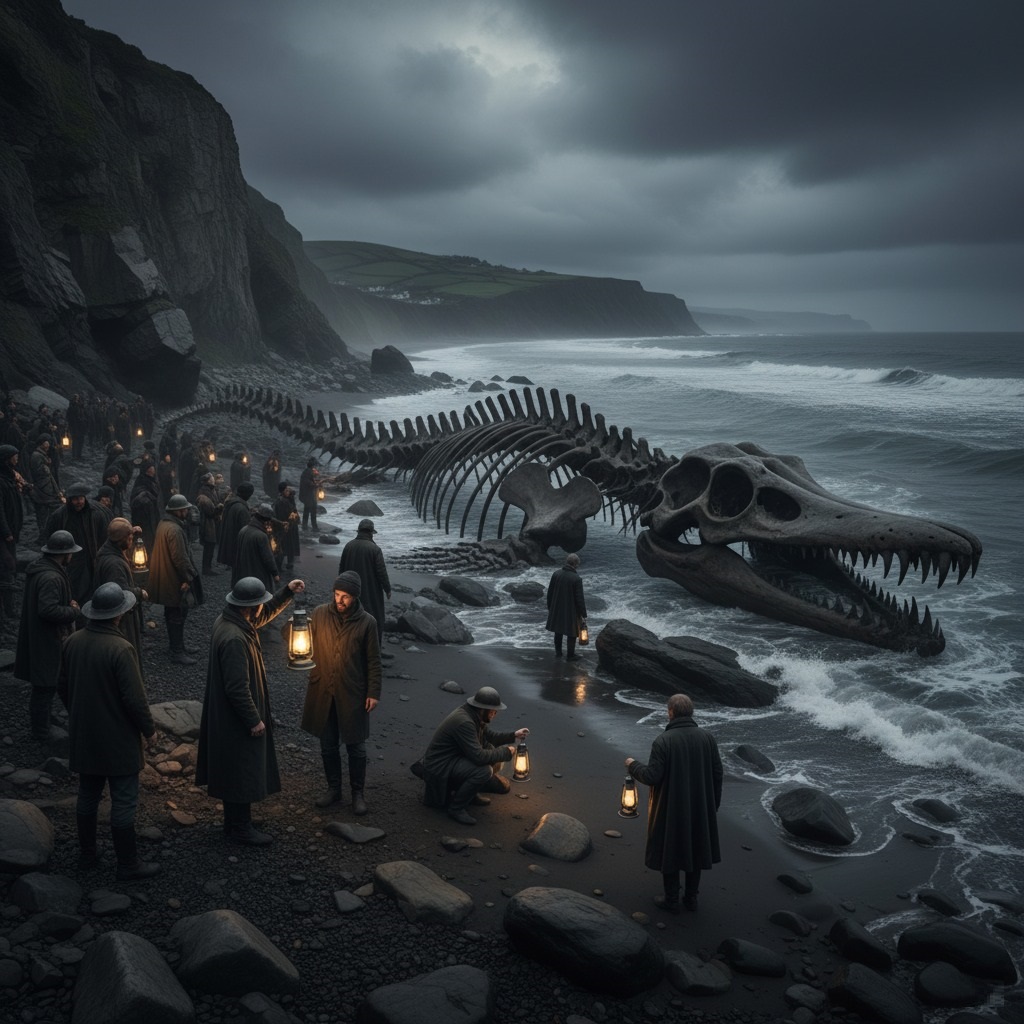The Lyme Regis Leviathan: Unearthing Ancient Giants on the Jurassic Coast

The year is 1823. The salt-laced wind whipped off the English Channel, carrying the scent of brine and the promise of discovery. Young Mary Anning, her face perpetually etched with the sun and spray of Lyme Regis, knelt by the churning tide, her hammer poised. For years, she had scoured the treacherous cliffs and beaches of the Jurassic Coast, coaxing secrets from the crumbling shale and limestone. Her finds had already startled the scientific world – ichthyosaurs, plesiosaurs – creatures of a forgotten age, pulled from the earth’s stony embrace.
But nothing, not even her wildest dreams, could have prepared her for the morning of December 7th. A fierce winter storm had raged for days, battering the coastline, carving new fissures into the ancient cliffs, and exposing what lay beneath. As the first grey light filtered through the retreating clouds, Mary, ever vigilant, noticed a colossal shadow near the waterline, something far larger than any of the “fish-lizards” she’d found before.
Her heart pounded. With the help of her younger brother, Joseph, and a handful of local men, armed with shovels and picks, they began to excavate. The task was monumental. Bit by bit, through the mucky sand and sea-worn pebbles, the impossible form began to emerge. Ribs like the timbers of a sunken ship, a spine that snaked for dozens of feet, and then, slowly, majestically, the skull. It was a terrifying, magnificent thing, with teeth like daggers, far too large for any known creature.
Word spread like wildfire. Gentlemen scholars, eager for a glimpse, descended upon Lyme Regis, their curiosity piqued by whispers of a true sea monster. They arrived in their cumbersome coats and top hats, their gas lanterns casting flickering halos against the darkening cliffs as night fell.
One prominent geologist, Dr. William Buckland, knelt by the colossal skull, his face a mixture of awe and scientific fervor. “A plesiosaur, certainly,” he declared, “but one of unprecedented size! A leviathan!”
Mary, though rarely credited with the same prestige as her male counterparts, knew the truth of the find in her bones. She had seen the layers of time revealed, understood the deep history etched into every fossil. This creature, a true ‘Lyme Regis Leviathan’, spoke of an era when vast reptiles ruled the oceans, long before humanity’s fleeting moment on Earth. It was a tangible link to a world unimaginable, a silent testament to the dynamic, ever-changing nature of life on Earth. As the tide crept back in, gently lapping at the ancient bones, Mary Anning felt a profound connection to the creature, a shared whisper of time echoing across 180 million years. Her discovery would not only cement her legacy but also profoundly shape the nascent science of paleontology, forever changing how humanity viewed its own place in the grand tapestry of life.
